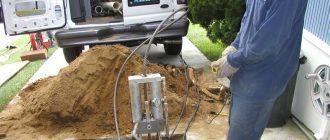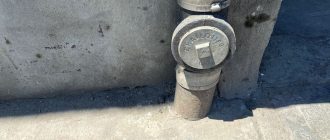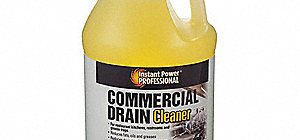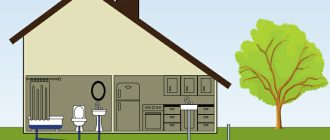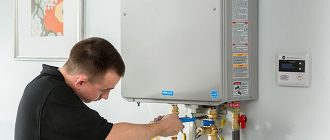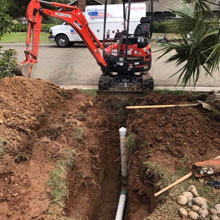
Top 6 Frequently Asked Questions About Sewer Line Repair
Are you facing issues with your sewer line and unsure about the repair process? Sewer line problems can be daunting, and finding the right solution can be overwhelming. In this ultimate guide, we have answered the top 6 frequently asked questions about sewer line repair to help you understand the process better.
1. Why is sewer line replacement so expensive?
Sewer line replacement can be expensive due to various factors. Firstly, accessing the sewer line requires excavation, which involves labor and equipment costs. Additionally, the materials used for the replacement, such as high-quality pipes and fittings, add to the overall cost. Moreover, specialized skills and expertise are required for proper installation, further increasing the expense. However, keep in mind that investing in quality repairs is essential to ensure long-lasting and efficient sewer functionality.
2. What is trenchless sewer line replacement?
Trenchless sewer line replacement is an innovative technique that eliminates the need for extensive excavation. Instead of digging up the entire sewer line, this method involves creating small access points to repair or replace the damaged sections. With trenchless technology, a new pipe is installed inside the existing one, minimizing disruption to your property and reducing the time and cost of the repair process. Trenchless sewer line replacement is a popular choice for its efficiency and minimal environmental impact.
3. How can I tell if my sewer line needs repair or replacement?
Several signs indicate that your sewer line may need repair or replacement. Common indicators include recurring clogs, foul odors, slow drains, gurgling sounds, and sewage backups. If you notice any of these signs, it is crucial to seek professional assistance promptly. A qualified plumber can conduct a thorough inspection using state-of-the-art equipment to assess the condition of your sewer line and recommend the appropriate repair solution.
4. Can I repair my sewer line myself?
Repairing a sewer line is a complex task that requires specialized knowledge and experience. It is not recommended for homeowners to attempt repairing their sewer lines themselves. Sewer systems are intricate and interconnected, and one wrong move can lead to severe consequences, such as further damage or contamination. To ensure safe and effective repairs, it is best to hire a licensed and experienced plumber who can assess the situation accurately and provide professional solutions.
5. How long does sewer line repair take?
The duration of sewer line repair can vary depending on the extent of the damage and the repair method employed. Traditional sewer line replacement that involves excavation can take several days or even weeks, especially if extensive digging is required. On the other hand, trenchless sewer line replacement is generally quicker and can be completed within a day or two. However, it is important to note that every case is unique, and the timeframe will be determined after a thorough assessment by a professional plumber.
6. How can I prevent sewer line issues in the future?
Preventive measures can help minimize the occurrence of sewer line issues in the future. Regular maintenance, such as professional inspections and cleaning, can identify potential problems before they escalate. Avoid flushing non-biodegradable items, grease, or large amounts of food scraps down the drain, as these can clog or damage the sewer line. Additionally, planting trees or large shrubs away from sewer lines can prevent root intrusion, a common cause of sewer line damage. By taking proactive steps to maintain your sewer line, you can significantly reduce the likelihood of costly repairs.
Now that you have answers to these top 6 frequently asked questions about sewer line repair, you can make informed decisions and ensure the long-term functionality of your sewer system. Remember, it is crucial to consult a professional plumber for accurate assessments and reliable solutions tailored to your specific situation.
What is sewer line repair?
Sewer line repair refers to the process of fixing or replacing damaged sections of a sewer pipe. Sewer pipes can become damaged due to various reasons, including aging, corrosion, tree root intrusion, shifting soil, or clogs. When a sewer line is damaged, it can cause sewage backups, foul odors, slow drains, or even complete blockages.
There are different methods of sewer line repair, including traditional excavation and trenchless repair methods. Traditional excavation involves digging a trench to access the damaged pipe, removing the damaged section, and replacing it with a new pipe. Trenchless repair methods, on the other hand, involve using techniques such as sewer pipe lining or pipe bursting to repair or replace the sewer line without the need for extensive excavation.
Sewer line repair can be a complex and expensive process, depending on the extent of the damage and the method used for repair. The cost of sewer line repair can vary based on factors such as the location of the damage, the materials used, and the expertise required. In some cases, the repair may only require a simple fix, such as applying a sewer pipe repair sleeve. However, in more severe cases, a complete sewer line replacement may be necessary, which can be quite expensive.
It is important to address sewer line issues promptly to avoid further damage and potential health hazards. Regular maintenance, including sewer line inspections and cleaning, can help prevent major sewer line problems and minimize the need for costly repairs.
When do I need sewer line repair?
If you are experiencing any of the following issues with your sewer line, it may be time to consider sewer line repair:
| 1 | Frequent Drain Clogs |
| 2 | Sewage Backup |
| 3 | Foul Odors |
| 4 | Slow Drainage |
| 5 | Sinkholes or Depressions |
| 6 | Cracked or Collapsed Pipe |
These issues can indicate a problem with your sewer line, and if left unaddressed, they can lead to further damage and more expensive repairs. Sewer line repair is necessary to fix the underlying issues and prevent further damage to your plumbing system.
One question that may come to mind is why is sewer line replacement so expensive. Sewer line repair can be costly due to the labor-intensive nature of the work and the need for specialized equipment and materials. Additionally, accessing the sewer line often requires digging, which can increase the overall cost of the repair. However, investing in proper sewer line repair is essential to avoid more expensive repairs in the future.
In some cases, a sewer pipe repair sleeve can be used as a cost-effective alternative to full sewer line repair or replacement. A sewer pipe repair sleeve is a flexible tube that is inserted into the damaged pipe and then inflated to create a new, durable lining. This method can save time and money compared to traditional sewer line repair, especially if the damage is limited to a small section of the sewer line.
If you are experiencing any of the signs mentioned above or suspect an issue with your sewer line, it is crucial to contact a professional plumber to assess the situation and recommend the appropriate sewer line repair solution.
How much does sewer line repair cost?
When it comes to sewer line repair, the cost can vary depending on several factors. One of the main reasons why sewer line replacement can be expensive is due to the complex nature of the job. Sewer lines are located underground, and accessing them requires specialized equipment and skilled technicians.
In addition to the labor and equipment costs, another factor that contributes to the expense is the materials used for sewer line repair. In some cases, a sewer pipe repair sleeve may be needed to fix any cracks or leaks in the line. This sleeve is made of durable materials such as high-density polyethylene and is designed to provide a long-lasting solution.
Furthermore, the length and depth of the sewer line can also impact the cost of repair. Longer and deeper pipes may require more time and effort to fix, which can result in higher expenses.
It’s important to note that the cost of sewer line repair can vary greatly depending on the specific circumstances of each project. It’s recommended to contact a professional plumber to assess the situation and provide an accurate cost estimate.
While sewer line repair can be costly, it’s crucial to address any issues promptly to prevent further damage and costly repairs in the future. Regular maintenance and inspections can also help identify potential problems early on, which can save you money in the long run.
What are the different methods of sewer line repair?
When it comes to sewer line repair, there are several different methods that can be used depending on the specific situation. Two common methods are traditional trenching and trenchless sewer line replacement.
Traditional trenching involves digging a trench along the length of the damaged sewer line, allowing access to the pipe for repair or replacement. This method is effective but can be costly and time-consuming, as it requires extensive excavation and restoration of the affected area.
Trenchless sewer line replacement, on the other hand, is a newer and more innovative method that minimizes the need for excavation. This method involves creating small access points at the beginning and end of the damaged pipe, then using advanced tools and techniques to install a new pipe inside the existing one. This eliminates the need for extensive digging and greatly reduces the cost and time involved in the repair process.
Trenchless sewer line replacement offers several advantages over traditional trenching. It is less disruptive to the surrounding environment, as it minimizes the need for digging and reduces the impact on landscapes, driveways, and other structures. Additionally, it is often more cost-effective in the long run, as it eliminates the need for extensive excavation and restoration. However, it may not be suitable for all situations, such as cases where the existing pipe is severely damaged or has collapsed.
| Traditional trenching | Effective | Costly, time-consuming, disruptive |
| Trenchless sewer line replacement | Minimizes excavation, cost-effective | May not be suitable for severe damage or collapse |
Overall, the choice of method depends on the specific condition of the sewer line and the requirements of the repair. It is recommended to consult with a professional plumber or sewer line specialist to determine the most suitable method for your situation.
Can I repair a sewer line myself?
Repairing a sewer line is a complex and tough job that requires proper knowledge, skills, and equipment. It is not recommended for homeowners to attempt repairing a sewer line themselves, as it can lead to further damage and costly repairs in the future.
One of the main reasons why sewer line replacement is so expensive is due to the extensive labor and specialized equipment required. The process often involves excavation and digging, which can be time-consuming and costly. Trenchless sewer line replacement, though more expensive upfront, minimizes the need for excavation and can be a more cost-effective solution in the long run.
Professional sewer line repair specialists have the expertise and experience to properly diagnose and fix sewer line issues. They can also ensure that the repair is done correctly and to code. Additionally, they have access to the necessary tools and equipment to complete the job efficiently and effectively.
Attempting to repair a sewer line without the proper knowledge and equipment can result in more extensive damage, as well as potential health and safety hazards. It is best to leave sewer line repairs to the professionals to ensure the job is done correctly and to avoid further issues down the line.
How do I choose a professional for sewer line repair?
When it comes to sewer line repair, it is important to choose a professional who has the necessary skills and experience to handle the job efficiently and effectively. Here are a few factors to consider when selecting a professional for sewer line repair:
- Experience: Look for a professional who has extensive experience in sewer line repair. They should have a track record of successfully completing similar projects in the past.
- License and Certification: Ensure that the professional you choose is properly licensed and certified. This will guarantee that they have met the necessary standards and regulations for sewer line repair.
- References and Reviews: Ask for references from previous clients and check online reviews to get an idea of the professional’s reputation. Positive reviews and satisfied customers are a good sign of the quality of their work.
- Insurance: Verify that the professional has appropriate insurance coverage. This will protect you from any liability in case of accidents or damages that may occur during the repair process.
- Equipment and Technology: Inquire about the equipment and technology the professional uses for sewer line repair. Trenchless sewer line replacement, for example, is a more efficient and less disruptive method compared to traditional techniques. Look for professionals who are knowledgeable and skilled in using advanced techniques and equipment.
- Cost: While cost is an important consideration, it should not be the sole determining factor. Remember that sewer line repair is a complex and specialized task. It requires expertise and proper equipment, which may contribute to higher costs. Instead of focusing solely on the price, consider the overall value and quality of the service offered.
By considering these factors, you can select a professional for sewer line repair who will not only provide you with a top-quality service but also ensure a smooth and hassle-free repair process. Remember to compare quotes, ask questions, and choose a professional who meets your specific needs.
What precautions should I take during sewer line repair?
During sewer line repair, it is important to take certain precautions to ensure the safety and effectiveness of the process. Here are some important steps to follow:
1. Notify neighbors and residents: Inform your neighbors about the sewer line repair work beforehand. This will allow them to take necessary precautions and avoid any inconvenience.
2. Secure the area: Make sure to secure the area where the repair work is taking place. Use caution tape or barriers to keep people away from the work zone. This will prevent accidents and injuries.
3. Use proper safety equipment: If you are involved in the repair work, make sure to wear appropriate safety equipment such as gloves, goggles, and boots. This will protect you from any potential hazards or contamination.
4. Follow trenchless sewer line replacement techniques: Trenchless sewer line replacement is a method that minimizes excavation and disruption to the surrounding area. By opting for this technique, you can reduce the risks associated with traditional excavation methods.
5. Hire a professional plumber: It is essential to hire a licensed and experienced plumber for sewer line repair. They will have the necessary skills and knowledge to handle the repair work safely and efficiently.
6. Consider sewer pipe repair sleeve: If your sewer pipe has minor leaks or cracks, a sewer pipe repair sleeve can be a cost-effective solution. This method involves inserting a sleeve into the damaged pipe and securing it with adhesive or heat. It is important to consult with a professional plumber to determine if this method is suitable for your specific situation.
By following these precautions, you can ensure a smooth and successful sewer line repair process, minimizing any potential risks or inconveniences.
How long does sewer line repair take?
The duration of sewer line repair depends on several factors, including the extent of the damage, the location of the problem, and the method of repair. In general, most sewer line repairs can be completed within a few days to a few weeks.
If the issue is minor, such as a small crack or leak, it may be possible to fix it with a sewer pipe repair sleeve. This involves inserting a sleeve into the damaged pipe to seal the leak and restore its functionality. This method is typically quicker and less disruptive than traditional repair methods, and can typically be completed within a day or two.
However, if the sewer line is extensively damaged or requires replacement, the repair process may take longer. In such cases, the old sewer line will need to be excavated and removed, and a new line will need to be installed. This process can take several days or even weeks to complete, depending on the complexity of the project.
It’s also important to note that sewer line repair can be expensive. There are various factors that contribute to the cost, including the extent of the damage, the location of the problem, and the method of repair. Additionally, sewer line replacement is typically more expensive than simple repairs. This is because it involves more labor, materials, and equipment, as well as additional permits and inspections.
In conclusion, the duration of sewer line repair depends on the specific situation, but most repairs can be completed within a few days to a few weeks. It’s also important to be aware that sewer line repair can be costly, especially if replacement is necessary. However, investing in timely repairs can help prevent more extensive damage and costly repairs in the future.
What are the signs of a faulty sewer line?
Having a faulty sewer line can cause a lot of inconvenience and expensive repairs if not addressed promptly. It is important to identify the signs of a faulty sewer line early on to avoid further damage. Here are some common signs to look out for:
| 1. Slow drainage | If you notice that your sinks, toilets, or bathtubs are draining slower than usual, it could be a sign of a blockage or damaged sewer line. This could indicate that waste and water are not flowing properly through the pipes. |
| 2. Foul odors | A foul smell coming from your drains or yard is another sign of a faulty sewer line. This odor could indicate that sewage is leaking or seeping out of a cracked or damaged pipe. |
| 3. Multiple clogged drains | If you have multiple drains clogging at once, it is likely that there is a blockage in your main sewer line. This is a serious issue that should be addressed immediately to prevent sewage backups. |
| 4. Standing water or damp spots | If you notice standing water or damp spots in your yard, it could be a sign of a sewer line leak. The water may surface due to a break or crack in the sewer pipe. |
| 5. Sewage backup | A sewage backup is an obvious sign of a faulty sewer line. If you notice sewage coming up through your drains, it means that there is a blockage or damage in your sewer line that needs immediate attention. |
| 6. Increased pest activity | A faulty sewer line can attract pests like rats, mice, and cockroaches. If you notice an increase in pest activity around your property, it could be due to a leaking or damaged sewer line. |
If you notice any of these signs, it is important to call a professional plumber to assess and repair your sewer line. Remember that sewer line repairs can be expensive, especially if a complete sewer line replacement is required. However, the cost of repair is worth it to prevent further damage and costly repairs in the future.
Can tree roots cause sewer line damage?
Yes, tree roots can cause significant damage to sewer lines. Tree roots are naturally attracted to the moisture and nutrients found in sewer pipes, which can lead to their infiltration and blockage. As tree roots grow, they can exert pressure on the sewer pipe, causing cracks, leaks, or even complete collapse.
When tree roots invade a sewer line, it’s essential to address the issue promptly to prevent further damage. A common method used for repairing sewer lines damaged by tree roots is the installation of a sewer pipe repair sleeve. This sleeve is inserted into the damaged section of the pipe, creating a new, durable liner that seals off any cracks or leaks caused by tree roots.
It’s important to note that even after repairing the damage, tree roots may continue to grow and seek moisture from the sewer line. Regular maintenance, such as root cutting or chemical treatments, may be necessary to prevent future issues.
Furthermore, sewer line replacement can sometimes be necessary if the damage caused by tree roots is extensive or if the pipe is too old or deteriorated to be salvaged. Sewer line replacement can be a complex and expensive process, involving excavation and the installation of a new pipe. Factors such as the length of the pipe, accessibility, and necessary permits can contribute to why sewer line replacement is often costly.
Overall, it’s crucial to be aware of the potential damage that tree roots can cause to sewer lines and to take preventive measures, such as regular inspections and maintenance, to keep your sewer system in optimal condition.
Can sewer line repair cause damage to my property?
When it comes to sewer line repair, there is always a potential risk of causing damage to your property. Sewer line replacement can be a complex and extensive process, which may involve digging trenches or accessing pipes through walls and floors. This can result in disturbances to your property, such as digging up your yard, breaking concrete, or removing parts of your walls.
However, with advancements in technology, there are now more efficient and less invasive methods available, such as trenchless sewer line replacement. Trenchless methods involve using specialized equipment to access and repair the sewer line without the need for extensive digging.
Although trenchless sewer line replacement can be more expensive than traditional methods, it can minimize the potential damage to your property. By using techniques like pipe bursting or pipe lining, the sewer line can be repaired or replaced without causing significant disturbances to your landscape or structures.
It’s important to consult with a professional sewer line repair company to assess the best method for your specific situation. They will consider factors such as the condition of your sewer line, the location of the damage, and the accessibility of the pipes. By choosing the appropriate repair method, you can minimize potential damage while ensuring the longevity and functionality of your sewer system.
In summary, sewer line repair can cause damage to your property, but with the availability of trenchless methods, the potential for damage can be significantly reduced. Despite the higher cost associated with trenchless sewer line replacement, it can provide a more efficient and less disruptive solution for your sewer line repair needs.
Are there any alternatives to sewer line repair?
If you are facing issues with your sewer line and wondering if there are any alternatives to traditional sewer line repair, you’re in luck! There are actually a few alternative methods that can be used depending on the specific situation. Here are a couple of the most common alternatives:
- Trenchless sewer line replacement: This method is becoming increasingly popular due to its cost-effectiveness and minimal disruption to your property. With trenchless sewer line replacement, a new pipe is installed inside the existing damaged pipe, eliminating the need for extensive digging. This method can save you time and money compared to traditional sewer line replacement, especially if your property has landscaping or other structures that would be expensive to repair or replace.
- Sewer line relining: This alternative involves inserting a flexible lining material into the damaged pipe. The lining material is then inflated and cured, creating a new pipe within the old one. Sewer line relining can be a good option if the existing pipe is structurally sound but has small cracks, leaks, or other minor issues. It is less invasive and can extend the lifespan of the sewer line without the need to excavate.
It’s important to note that the availability of these alternatives depends on the extent and type of damage to your sewer line. Consulting with a professional plumber or sewer line repair specialist is the best way to determine which method is suitable for your specific situation.
Q&A:
What is a sewer line repair?
A sewer line repair is a process of fixing any problems or damage to the sewer line that carries waste water from your home to the main city sewer system.
How do I know if I need a sewer line repair?
There are several signs that indicate you may need sewer line repair, including slow drains, foul odors, gurgling sounds in your plumbing, frequent clogs, and sewage backups.
What are the common causes of sewer line damage?
Common causes of sewer line damage include tree root intrusion, aging pipes, soil shifting, clogs caused by grease or foreign objects, and damage from construction or excavation.
How much does sewer line repair cost?
The cost of sewer line repair varies depending on the extent of the damage, the length of the sewer line, and the location of the problem. On average, sewer line repairs can cost anywhere from a few hundred dollars to several thousand dollars.
Can I repair my sewer line myself?
While it is possible to attempt a DIY sewer line repair, it is generally not recommended. Sewer line repairs require specialized tools, knowledge, and experience. It is best to hire a professional plumber who can properly diagnose and fix the problem.
What are the signs of a damaged sewer line?
The signs of a damaged sewer line include backed-up drains, foul odor, multiple clogged drains, sewage backup in the basement, slow draining toilets, and lush patches of grass in the yard.

